Field Guide to the Deep History Coast
Overstrand
Parking: On severed remnant of old Coast Road (leading to Clifton Way) off the B1159 (TG 253406). Free parking in Clifton Way.
Access: Footpath down the fisherman's slope in Overstrand village (TG 248411) or a slip road from Clifton Way SE of Overstrand (on foot only)(TG 253406).
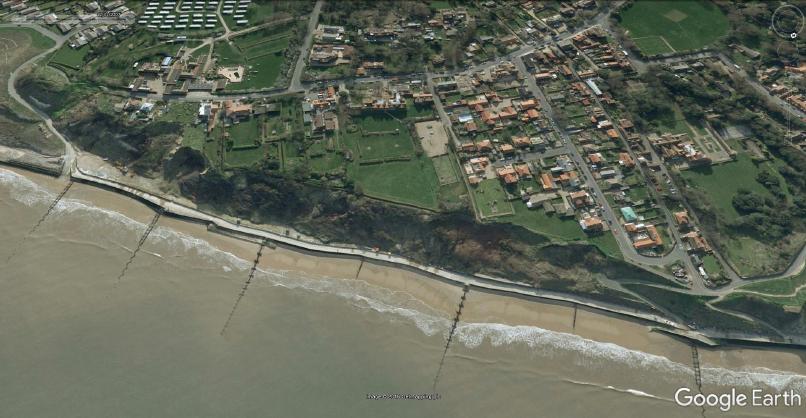
Geology
Chalk Rafts
If you are approaching this section down the slip road from Coast Road/Clifton Way, you will pass exposures of Chalk on your left. They are glacial 'rafts', embedded in till, that have been displaced from their natural position just below sea level by the bulldozing power of glaciers in the Anglian ice advance. These orientation of these blocks differ however from those further 'down ice' at Sidestrand, in that they are dipping eastwards and southwards and they exhibit normal faulting, as opposed to thrusting. They are half a kilometre 'up ice' from the ice margin and represent an extensional deformation regime and have been affected by over-riding ice.
The boundary between the Campanian and Maastrichtian stages of the Upper Cretaceous occurs within the illustrated exposure, so this is the best place in Norfolk to study it.
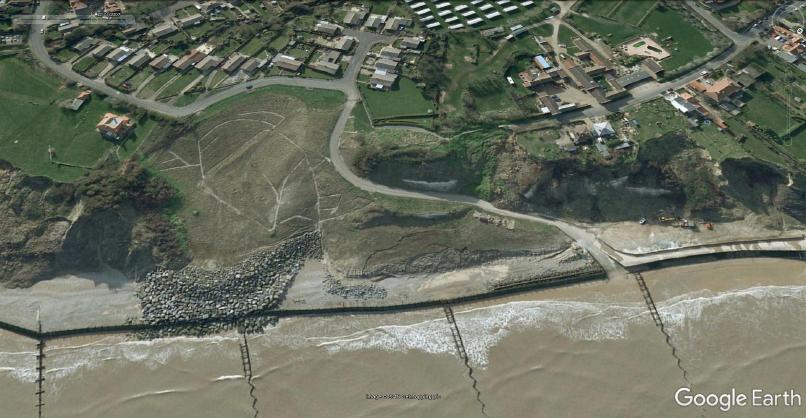 |
Cromer Forest-bed
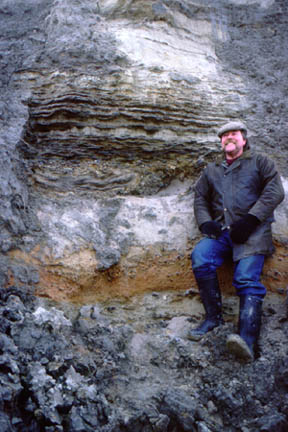 The sediments in the lower cliff belong to the Cromer Forest-bed Formation and are of lower Middle Pleistocene age (Pastonian, Beestonian and Cromerian stages). Over these are glacial sediments - glaciotectonised tills and glacial lake clays (rhythmites). Due to slumping of the cliff the section shown here is rarely exposed for long. Tidal laminated sediments of clay interbedded with sand shows conspicuous ripplemarks in side section. Collector John Clayden for scale, 1986.
The sediments in the lower cliff belong to the Cromer Forest-bed Formation and are of lower Middle Pleistocene age (Pastonian, Beestonian and Cromerian stages). Over these are glacial sediments - glaciotectonised tills and glacial lake clays (rhythmites). Due to slumping of the cliff the section shown here is rarely exposed for long. Tidal laminated sediments of clay interbedded with sand shows conspicuous ripplemarks in side section. Collector John Clayden for scale, 1986.
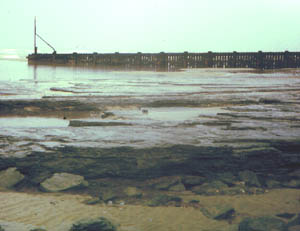
This is a rare picture of the foreshore to the east of Overstrand promenade in the 1980s. The beach was exceptionally scoured to reveal Pastonian sediments comprising clays interbedded with ferruginous sands and gravels, among which is the so-called Elephant Bed on account of the numerous fossil remains it has yielded.
Geoengineering
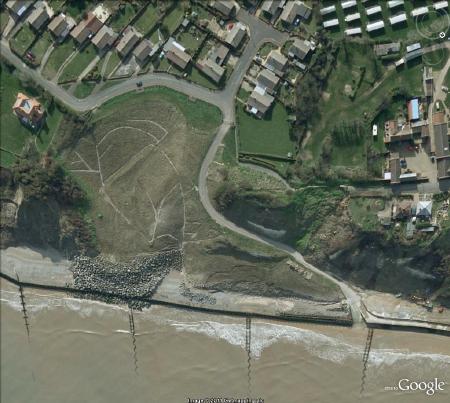
The structural geology of the cliffs at Overstrand is predominantly one of low angle thrusts developed in glacial materials, with movement especially active where there are glacial lake clays. With a sense of vergence from the west to the east the thrusts have piled up glacial materials, with slippage planes dipping to the north (obliquely to the coast). That means, there are steep planes of weakness in the cliff dipping northwards. Once the toe of the cliff has been eroded by the sea they are liable to slide seawards again, especially when wet. This is exactly what happened in the 1990s, when a very active landslip developed in the vicinity of the sliproad that ran from Clifton Way to the beach. A deep gully developed that destroyed the road and threatened a small housing estate a little way back from the cliff edge.
A major scheme was undertaken very successfully by North Norfolk District Council to stabilise the cliff. This involved a combination of techniques. Firstly bolstering the foot of the cliff with rock armour of larvikite, which simultaneously dammed the flow of slurried clay at the bottom of the slip and also prevented the sea from removing the talus at the toe; then covering the active slip area with geotextile and ballast material with a network of drainage channels to take away rainwater that would otherwise penetrate the ground and remobilise the slippery clays. The area was then seeded with grass.
The scheme was completed in 1995 and has stabilised the landslip very successfully to date. It is interested to note that while it was fully funded in 1995 the rules have since changed and such a scheme would not be funded today.
